 |
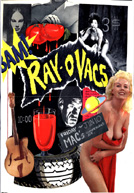
Comment
on this story
What:
Refuse, poster art show
When:
April 16, 6-9 p.m.
Where:
Fifth floor Woodruff building, Gay Street.
Cost:
Free
|
Lowbrow Art
A UT student exhibits Knoxville flyers from past decades
by John Sewell
Now something of a vanishing form, flyer art was once the main conduit for local bands to advertise their shows. I remember the halcyon days of the ’80s when punk was proud and bald was beautiful, baby. Xerox flyer art was quick, cheap and dirty, and kids tacked ‘em up on every available surface. The legality of such commando advertising tactics was a little bit, ahem, questionable. But the art produced was like the music it represented: brash, immediate and gone before you know it.
I remember making special trips down the Cumberland Avenue Strip on Saturday afternoons just to see what was going on in the local rock scene. With no Internet and no coverage in the local papers, it was the only way to keep abreast of the happening happenings.
A rock flyer would last about a week before the elements got to it, zealous citizens and shopkeepers would remove it, or another band covered it up. Telephone poles on Cumberland Avenue would be covered with inch- thick shards of paper and so many residual staples it was hard to connect staple to wood for the next round of flyers. Ever resourceful in their quest for rock ’n’ roll glory, musicians would tack their glorious little handbills everywhere, only to have them removed in short order. Darwinism was once again proven true in the dangerous world of the rock food chain.
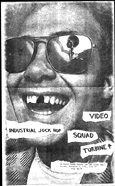
Lucky for us, amateur anthropologists of underground rock collected these little gems, and the resulting collection is a time capsule of Knoxville rock. Chad Pelton, a graphic design major at the University of Tennessee, brings these paper relics back to the light of day with Refuse, an art show celebrating Knoxville’s flyer art history.
“I decided to call the show Refuse because a lot of us had been trained to think of the stuff on telephone poles as just junk,” says Pelton. “Originally, the idea was to do a book. And I still hope to do that.”
The Refuse project is also the focus of Pelton’s thesis project. He says the biggest problem was convincing his professors to OK the idea. “I’m basically a curator of other people’s artwork, and they wanted some stuff from me as well.”
Covering over 20 years of Knoxville’s flyer art, the show runs the gamut from hand-lettered, cut-and-paste collages to quite sophisticated designs created on home computers.
The advent of the home computer has been a double-edged sword for flyer art. Sure, almost anybody can design a pretty slick flyer these days. But the use of bulk email and websites has all but erased the need to make flyers.
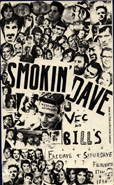
Computer generated flyer art can be great, but it just seems to have a homogenous quality. What’s more, the cut-and-paste flyers had a bit more of that intangible what-the-heck factor.
“Well, everyone can be a graphic designer with a computer,” says Pelton. “I agree that there’s something to be said for the cut-and-paste method. But then there are people like Bryan Baker [Yee-Haw Industrial Letterpress artist featured in the show] who are doing amazing things now.
“I think that the older flyers are a lot more energetic, but maybe that was just the standards of the music community at the time,” Pelton continues. “I think the energy of the flyers just kind of reflects the camaraderie that some of the bands had.”
An interesting twist to the exhibit is the music. There will be no live bands playing at the exhibit, but headphones will be available so patrons can hear the bands of yore while looking at their artwork.
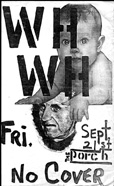
Pelton found many longtime scenesters to contribute their flyer collections to the exhibit, including Jay Nations, Rus Harper and Joey McPeak. Newer contributors include Bryan Baker, whose employer, Yee-Haw Industries, is a standard bearer for indie-rock flyers distributed nationally.
Joey McPeak, a former denizen of the infamous Hippie House, explains how his posters got into Pelton’s hands.
“My collection spanned all the way from the ’80s and the first one is a Real Hostages [early Todd Steed project] poster,” McPeak says. “I moved to San Francisco in 1989 and I took them with me. Then I moved back home to Memphis and had them here.
“So 10 years later, Chad Pelton calls me out of the blue, and I thought it would be best to give them away rather than just let them rot and deteriorate here.
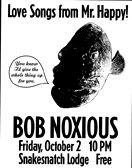
“As far as I’m concerned, the ones from the ’80s were so much more unique. They were from the soul. The flyers of that era were labors of love; the handmade ones were just so much more visually arresting. Flyers made with computers, well, that’s just too easy.
“Some of [the older ones] were really poor quality, lowbrow art. But it seemed that later on some of them took on a highbrow quality. I remember Jon Wallace did some really sophisticated looking stuff later on with the STDs.
“The flyers were really good, and it seemed like everybody was competing to top one another,” McPeak continues. “And that drove the initiative to make better flyers.”

April 15, 2004 • Vol. 14, No. 16
© 2004 Metro Pulse
|
|